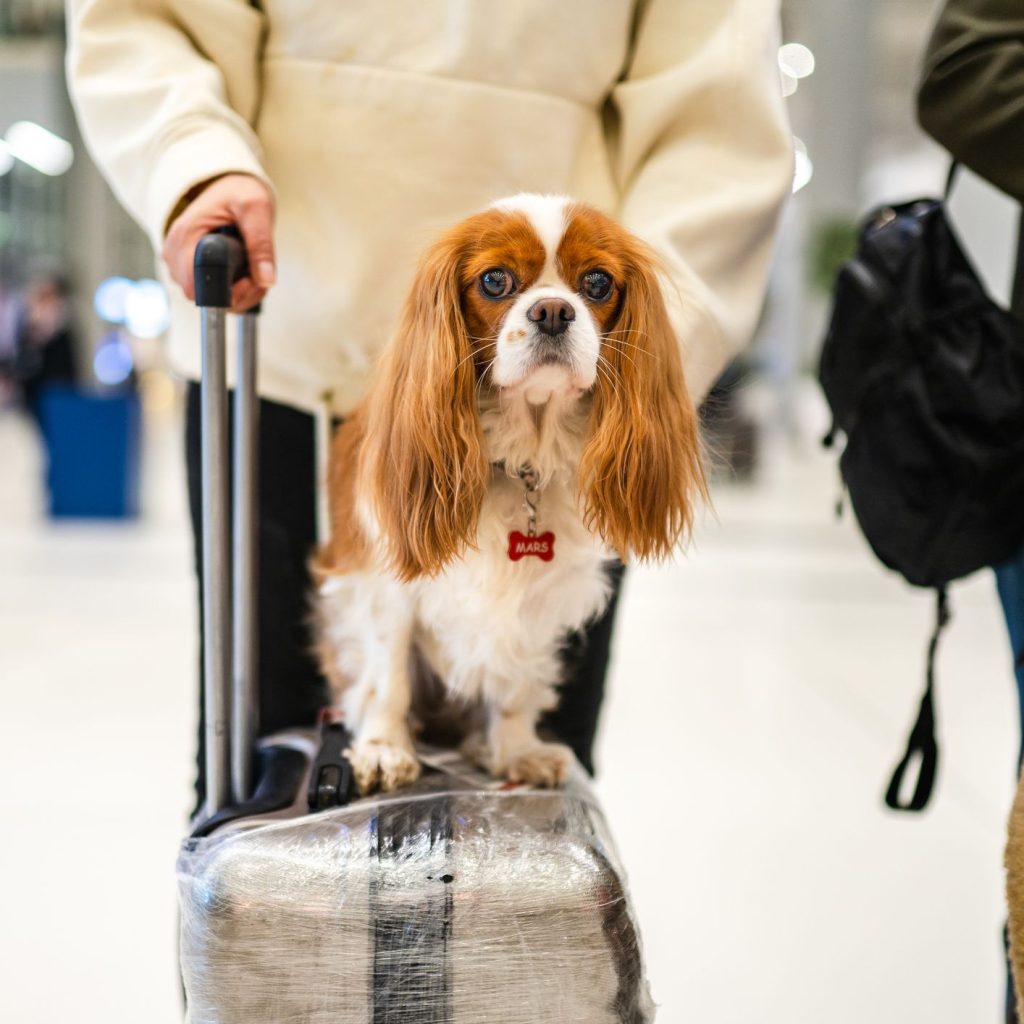Strategies for Traveling with Your Pet: Tips for a Smooth and Safe Experience

Planning Your Pet-Friendly Adventure
Traveling with your pet can be an exciting adventure, filled with opportunities for bonding and exploration. However, it also comes with its own set of challenges and considerations. Proper planning is vital for ensuring a smooth and safe experience for both you and your furry friend. By understanding their needs and preferences, you can make the journey enjoyable, reducing stress for everyone involved.
Researching Pet-Friendly Accommodations
Finding a place to stay is one of the cornerstones of pet-friendly travel. Not all hotels, campsites, or vacation rentals are created equal when it comes to welcoming pets. Take the time to search for accommodations that specifically cater to pets, such as those listed on websites like BringFido or Airbnb’s pet-friendly filters. Make sure to read up on their policies, as some may impose additional fees or have restrictions on certain breeds. Remember, it’s not just about being allowed; look for places that offer amenities like dog parks or pet-sitting services, enhancing the overall experience for your companion.
Preparing Your Pet for the Journey
Preparation is key when it comes to travel. Start by helping your pet acclimatize to the idea of traveling. If they are not used to car rides, consider taking them on short trips to build their confidence and reduce anxiety. Ensure your pet’s safety by using a quality pet seatbelt or a travel carrier. Moreover, if you’re planning to use public transport, familiarize your pet with the sounds and movements of trains or buses beforehand to prevent any surprises. Proper training can make a significant difference.
Packing Essential Supplies
When it comes to packing, think about your pet’s comfort and well-being. Bring along sufficient food and water, as well as collapsible bowls for convenience. Don’t forget to pack any medications your pet may need, and consider bringing comfort items such as their favorite toys or a blanket from home. This can help your furry friend feel more at ease in unfamiliar surroundings. Ensuring that your pet has everything they need can create a calmer and more enjoyable travel experience.
Understanding Local Laws and Regulations
Before hitting the road, it’s crucial to familiarize yourself with the local laws and regulations regarding pets, as these can differ significantly from one jurisdiction to another. Some national parks and recreational areas have strict leashing laws, while certain cities impose breed-specific legislation. Checking with the local tourism office or online resources can provide you insight into these regulations, so you can plan your itinerary accordingly.

Consulting Your Veterinarian
Lastly, a visit to the vet before your trip is an essential step in the planning process. Ensure that your pet is up-to-date on vaccinations and that they are fit for travel. This is particularly important if you are crossing state lines, as some areas require proof of rabies vaccinations. Your veterinarian can also provide advice tailored to your pet’s specific needs, helping make your adventure safer.
Whether embarking on a weekend getaway or a long cross-country road trip, proper preparation can pave the way for creating memorable, stress-free moments with your four-legged companion. By incorporating these essential strategies, you can ensure that your pet’s travel experience is as fulfilling as your own. Stay tuned for more tips and tricks that can lead you to a successful journey!
DISCOVER: Click here to learn how pets can benefit child development
Creating a Travel-Friendly Environment
As you prepare for your journey, it’s vital to create an environment that keeps your pet comfortable and secure. One of the first steps is to invest in a quality travel carrier or crate that is well-ventilated and spacious enough for your pet to stand, turn around, and lie down comfortably. For cats, a sturdy carrier that they can feel secure in is essential. Dogs might appreciate a crate that mimics their usual resting space, as familiarity can ease anxiety.
Adjusting Your Pet’s Routine
Pets thrive on routine, and altering their schedule can lead to stress. To help your furry friend adjust, begin modifying their feeding and exercise routine a few days before departure. Incorporate additional exercise sessions to help expend excess energy, which can minimize restlessness during travel. If your pet is on medication or has specific dietary needs, ensure that you maintain this routine to keep their health on track. A well-rested and well-fed pet is less likely to experience travel-related stress.
Choosing the Right Mode of Transport
Choosing how you will travel is another important consideration. Whether you’re driving, flying, or using public transportation, each mode presents unique challenges and requirements for traveling with pets. Here are some tips for each method:
- Driving: Ensure your vehicle is pet-friendly by securing your pet in a crate or with a pet seatbelt. Make frequent stops for bathroom breaks and hydration and never leave your pet unattended in the car, as temperatures can rise quickly.
- Flying: Check the airline’s pet policy well in advance of your trip. Some airlines allow pets in the cabin, while others require them to fly in cargo. Confirm the dimensions of your pet’s carrier so it fits under the seat. Additionally, book direct flights whenever possible to lessen your pet’s travel time.
- Public Transport: Consult with the specific transport authority regarding pet policies, as regulations may vary. For example, trains might allow pets in non-pawprints zones, while bus services might have restrictions, especially during peak times.
Keeping Your Pet Calm During Transit
Regardless of your chosen mode of travel, keeping your pet calm is paramount. Consider the following strategies:
- Familiar Items: Bring along a favorite blanket or toy that carries your pet’s scent. This can significantly mitigate anxiety by providing comfort in new surroundings.
- Calming Aids: Depending on your pet’s temperament and anxiety levels, you might explore calming sprays, pheromone diffusers, or even consult your veterinarian about anti-anxiety medications for the journey.
- Regular Breaks: Schedule breaks during long trips to allow your pet to stretch their legs, hydrate, and relieve themselves. This can drastically reduce any pent-up energy or anxiety that may build up during travel.
By thoughtfully addressing these aspects of the travel experience, you can develop strategies that will not only ease your pet’s transition but also enhance your overall trip. Remember that while adventures await, the comfort and safety of your furry companion should always be a priority.
Preparation is Key
Traveling with your pet requires careful preparation to ensure a smooth and enjoyable journey for both you and your furry friend. First and foremost, planning your route is essential. Determine pet-friendly accommodations in advance and ensure you have regular breaks during long drives to let your pet stretch, relieve themselves, and hydrate.It’s also important to bring along necessary supplies. Pack your pet’s essentials including food, water, bowls, a leash, waste bags, and their favorite toys. Familiar items can provide comfort and alleviate anxiety while on the move. Additionally, consider bringing a pet first-aid kit and all relevant documents, including vaccination records and identification tags, to ensure a safe environment for your pet.
Transportation Choices
When it comes to transportation, different options will impact the experience of traveling with your pet. Whether you’re flying or driving, understanding the logistics is vital. For air travel, check with airlines for their pet policies, which vary widely. Some airlines allow pets in the cabin if they meet specific size and weight requirements, while others may require them to travel in cargo. Ensure you have an appropriate pet carrier that complies with airline regulations.If driving, make your vehicle pet-friendly by designating a specific area for your pet and using safety harnesses or carriers to prevent distractions and ensure their safety. Also, make sure to keep the windows closed to avoid sudden escapes and protect your pet from potential hazards outside.
Creating a Comfortable Environment
A smooth travel experience also hinges on making your pet’s environment comfortable during the journey. Use soft bedding in their carrier or in the back seat of your vehicle to provide stability and support. Keep the air conditioning at a comfortable temperature, as pets can suffer from heat exhaustion more quickly than humans.Every so often, check on your pet to ease any anxiety or discomfort they may feel. Having a calm demeanor yourself can also help maintain a stress-free atmosphere for your pet. If sense of unease persists, consider consulting your veterinarian for recommendations on calming products or solutions to use before and during travel.Whether you’re embarking on a short weekend trip or an extended vacation, employing these strategies can significantly enhance your experience. Remember, careful planning, ensuring safety, and creating a comfortable environment are crucial elements for a successful travel adventure with your beloved pet.
DIVE DEEPER: Click here to learn more
Health Precautions and Documentation
Another vital aspect when planning to travel with your pet is ensuring that they are in good health and ready for the adventure ahead. A pre-travel vet check-up is advisable, especially if you are traveling long distances or internationally. During this visit, ask your veterinarian for a health certificate, which may be required by airlines or hotels. This certificate typically verifies that your pet is healthy and up-to-date on vaccinations, ensuring that your furry friend is fit for travel.
Vaccination and Medication Requirements
Different regions in the United States—and around the globe—have varying vaccination requirements for pets. For instance, many states require rabies vaccinations for dogs and cats, which must be administered within specific time frames before travel. It’s crucial to understand these regulations to avoid any delays or issues upon arrival. Additionally, if your pet has chronic health issues, discuss with your veterinarian if they will need medication during the journey. Bringing enough medication for the entire trip, plus a little extra, can be a lifesaver in case of unexpected delays.
Pet Identification and Microchipping
The thought of losing your pet while exploring new territories is every pet owner’s nightmare. To mitigate this, ensure your pet has an identification tag with your current contact information attached to their collar. However, it’s also advisable to microchip your pet as a permanent form of identification. In case they wander off or get lost, shelters and veterinary clinics can easily scan the chip to find their owner. If your pet is already microchipped, check that the information is up-to-date before embarking on your journey.
Pet-Friendly Accommodation
Before packing your bags, research pet-friendly accommodations. Many hotels, motels, and rental properties in the United States now cater to travelers with pets, often providing amenities such as pet beds, bowls, and even treats. Websites like BringFido and Airbnb have filters allowing you to search for properties that are welcoming to furry guests. Make sure to read the fine print regarding any potential fees or restrictions to avoid surprises upon check-in.
Emergency Preparedness
No one hopes for emergencies, but it’s always beneficial to be prepared. Before departure, create a pet emergency kit that includes essentials such as food, water, a leash, first-aid supplies, and your pet’s medical records. Familiarize yourself with nearby veterinary offices or emergency pet clinics at your destination, so you know where to go if your pet needs immediate care. Consider saving these locations in your phone or writing them down somewhere easily accessible during your travels.
Through diligent preparation focused on health, identification, and suitable accommodations, you’ll ensure a smoother and safer travel experience for both you and your beloved pet. Keeping these elements in mind allows you to focus on creating lasting memories, instead of facing unexpected hurdles along the way.
LEARN MORE: Click here for effective training tips
Conclusion
Traveling with your pet can be one of the most rewarding experiences, filled with laughter, adventure, and unforgettable memories. However, the journey can quickly turn challenging if not handled responsibly. By implementing strategic planning and thorough preparation, you can set the stage for a smooth and safe trip.
It’s essential to start with comprehensive health checks and ensure that your pet is up-to-date on vaccination requirements. This not only protects your furry friend but also conforms to travel regulations. Additionally, keeping your pet identified through tags and microchipping provides peace of mind in case of separation. Researching pet-friendly accommodations in advance removes uncertainty from your itinerary, ensuring you have a comfortable place to relax together after a long day of travels.
Moreover, creating an emergency preparedness plan will allow you to tackle any unexpected challenges without stress. Having a well-stocked pet emergency kit, knowing nearby veterinary services, and having all necessary documentation in place can save you from potential mishaps. As you embark on your journey, remember that patience, flexibility, and a positive attitude go a long way in enhancing both your experience and that of your beloved companion.
Ultimately, traveling with your pet should be an enjoyable affair—a chance for both of you to explore new places and create bonding moments that last a lifetime. By following the outlined strategies, you’ll be well-equipped to embark on a journey that fosters happiness and safety for both of you. So pack your bags, grab your pet’s gear, and set out on an adventure that awaits!


